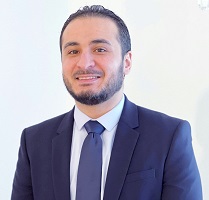Interview with Ali Elshaari, associate professor in applied physics
Ali is an associate professor at KTH, who recently started in this position after having held a research position at KTH. During the pandemic, the work environment has changed for most professions including that of a professor. We asked Ali about the changes he had to undergo due to the pandemic, and the challenges he is facing and has faced in his career.

Hello Ali, tell us a little bit about you, where you come from, your previous academic studies, etc?
I come from Benghazi, Libya, where I got my bachelor’s degree in electrical engineering. I did my PhD in the US working on silicon photonics. Then I worked as a postdoctoral research scientist in the Kavli Institute of Nanoscience, technical university of Delft in the Netherlands. In 2016, I joined KTH as a researcher working on hybrid quantum photonics.
Taking up a new position its on its own a challenge, besides everything that is happening around us. How has your time as an associate professor been so far?
I am really enjoying the new challenge, it is a bit more different from my role as a researcher, as it involves more work on course development, teaching, and planning for academic tracks in the department. The fact that I am surrounded by a wonderful group of colleagues and administration staff, makes the work very enjoyable and fulfilling.
Tell us about your research, what makes it important?
I work on the generation, manipulation, and detection of quantum bits (qubits) using integrated circuits approach. My research basically revolves around making optical circuits for light, that mimic conventional electrical circuits for electrons, at the single photon level.
Does your work have practical applications, if so, what would these be?
There are several important applications for quantum technologies. For example, we can build quantum transceivers, to detect and transmit quantum bits, that are protected from eavesdropping by the fundamental physical laws of quantum mechanics. This sets new standards for communication links securities that are protected by physics, as oppose for example to RSA cryptosystems which rely on the tremendous computationally difficulty to break the code.
Is it important for you to communicate your research to the world, if yes why and how do you do that?
I think this is very important, I have been involved in several press coverage of our work in popular science magazines and websites. It provides general awareness of the capabilities and limitations of the research in addition to increasing the general interest in the field, which can directly and indirectly be responsible for increasing public support of scientific research and the value of its importance. But at the same time, I believe that communicating the results should be done very carefully to eliminate any misunderstanding of the implications of the results, as sometime the case, which can result in creating a false image of reality and the interworking of the physical laws and what is permissible to the public.
